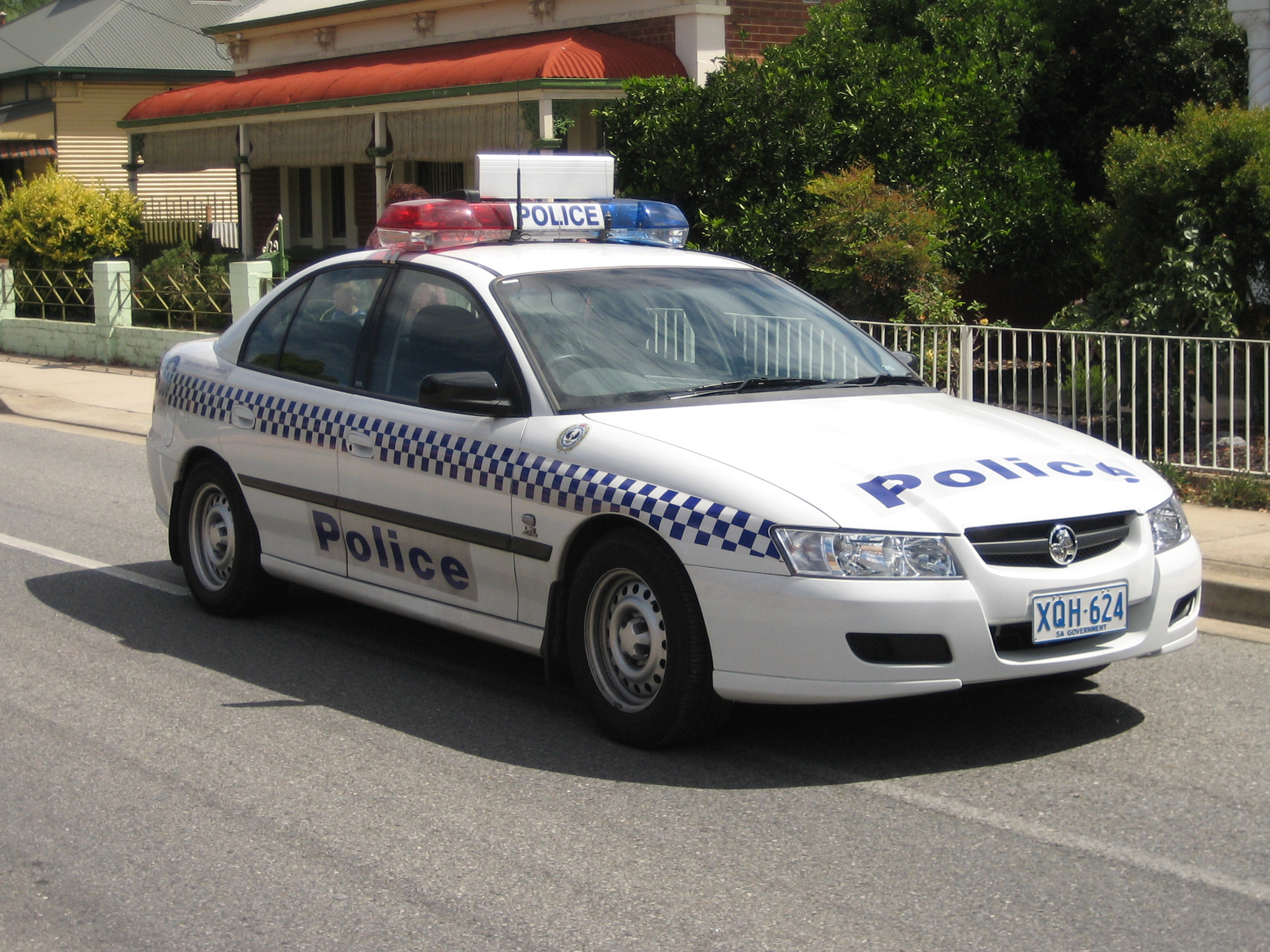
When purchasing a reliable vehicle, the well-known saying “forewarned is forearmed” takes on a new significance. This is especially true today, as car costs have continued to escalate amidst substantial inflation and tariff turbulence, making every investment in a vehicle more critical than ever. Given these economic challenges, exercising caution before investing in a new or used vehicle is paramount for consumers seeking durability and value for their money.
Indeed, many cars perform admirably in their early years, offering a seemingly problem-free experience. However, as the odometer approaches and crosses the 100,000-mile mark, the true test of a vehicle’s longevity and reliability begins. Some models, unfortunately, start exhibiting a host of expensive problems, turning what was once a dependable ride into a burdensome “money pit.” Understanding which vehicles are prone to such issues is crucial for making informed purchasing decisions.
Leveraging extensive experience and data, including insights from Jacob Carter, proprietor of Engine Rev Up—a blog dedicated to car maintenance and repairs—we’ve compiled a comprehensive list. This article delves into 14 specific car models that, according to expert analysis and common owner reports, tend to demand more repairs and break down more often after surpassing the 100,000-mile milestone. Our aim is to equip you with the knowledge to sidestep these potential pitfalls and invest in a vehicle that truly goes the distance without draining your wallet.
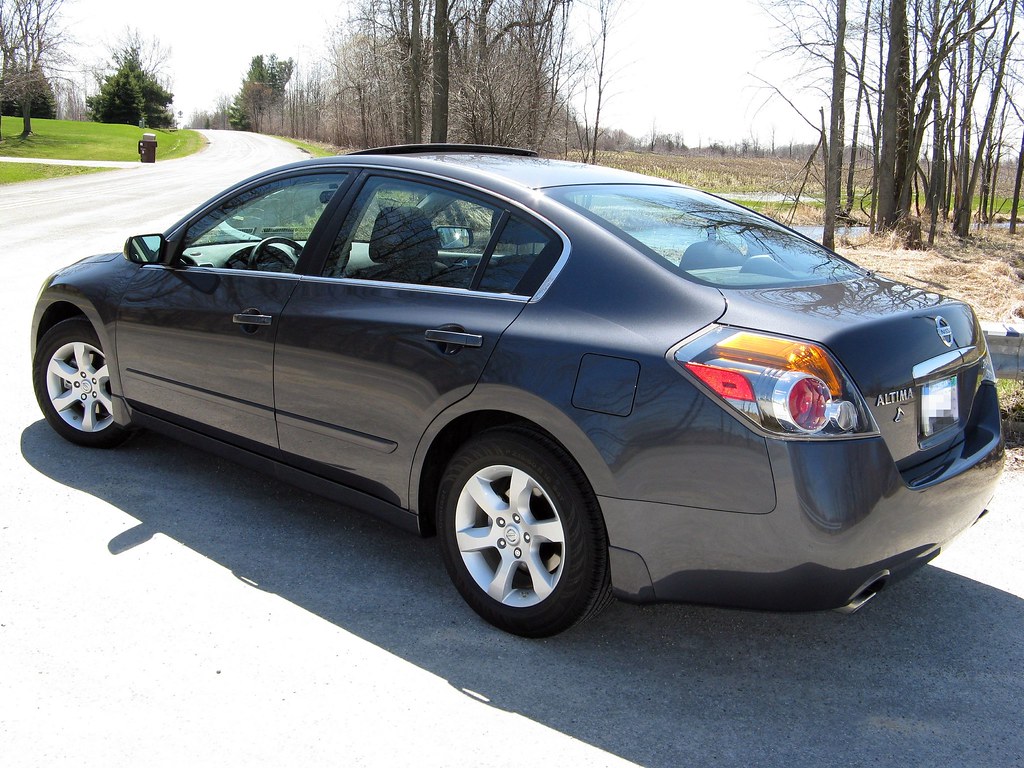
1. **Nissan Altima**: The Nissan Altima has long been recognized for its blend of reliable performance, a comfortable interior, and advanced safety features, making it a popular choice for many drivers. However, its reputation for durability takes a significant hit once it approaches or surpasses the 100,000-mile mark, primarily due to a critical mechanical flaw that can lead to substantial repair costs.
The most frequently cited problem involves its continuously variable transmission (CVT). This transmission type, found in numerous Altima models, tends to experience premature failure, often occurring shortly after reaching the 100,000-mile threshold, as highlighted by Jacob Carter. Such failures are not only inconvenient but can also lead to exceedingly expensive repairs, quickly diminishing the car’s overall value and long-term appeal.
Beyond the well-documented CVT issues, owners of Altimas, particularly those from the early 2010s and specific model years like 2002, 2005, 2009, 2013, and 2016, report a range of other significant problems. These include suspension issues, general engine troubles, and issues such as catalytic converter failure. Additionally, complaints about excessive oil consumption and exhaust system problems frequently arise, further cementing its status as a high-risk vehicle for costly post-100k-mile maintenance.
These pervasive issues indicate that while the Altima may appear attractive initially, its long-term ownership costs can be surprisingly high. Prospective buyers considering a used Altima with high mileage are strongly advised to exercise extreme caution and conduct thorough inspections to avoid inheriting a vehicle with a history of expensive and recurring mechanical woes. The appealing design and performance are often overshadowed by these long-term reliability concerns, transforming it into a financial burden rather than a dependable mode of transport.
Car Model Information: 2015 Nissan Altima 2.5 S
Name: Nissan Altima
Caption: 2023 Nissan Altima SR (L34; US)
Manufacturer: Nissan
Aka: Nissan Bluebird
Production: 1992–present
Class: Compact car
Predecessor: Nissan Bluebird,Nissan Stanza
ModelYears: 1993–present
Categories: 2000s cars, 2010s cars, 2020s cars, All-wheel-drive vehicles, All Wikipedia articles written in American English
Summary: The Nissan Altima is a mid-size car manufactured by Nissan since 1992. It is a continuation of the Nissan Bluebird line, which began in 1955.
The Altima has historically been larger, more powerful, and more luxurious than the Nissan Sentra but less so than the Nissan Maxima. The first through fourth-generation cars were manufactured exclusively in the United States and officially sold in North and South America, along with the Middle East and Australia. For other markets, Nissan sold a related mid-size sedan called the Nissan Teana which was between the Altima and Maxima in terms of size. In 2013, the Teana became a rebadged version of the fifth-generation Altima.
The name “Altima” was originally applied to a top trim line of the Nissan Leopard for the Japanese market in 1986, and then to the Nissan Laurel Altima mid-size car sold in Central America and the Caribbean before 1992. In 1992, Nissan discontinued the Stanza which was a Nissan Bluebird clone, replacing it with the US-built Altima, while remaining a compact car. The first Altima was produced in June 1992, as a 1993 model. All Altima models for the North American market were built in Smyrna, Tennessee, until June 2004, when Nissan’s Canton, Mississippi plant also began producing the model to meet high demand.
Get more information about: Nissan Altima
Buying a high-performing used car >>>
Brand: Nissan Model: Altima
Price: $8,235 Mileage: 117,517 mi.
Read more about: 15 Cars That Become Costly Money Pits After 100,000 Miles: Essential Insights for Savvy Buyers
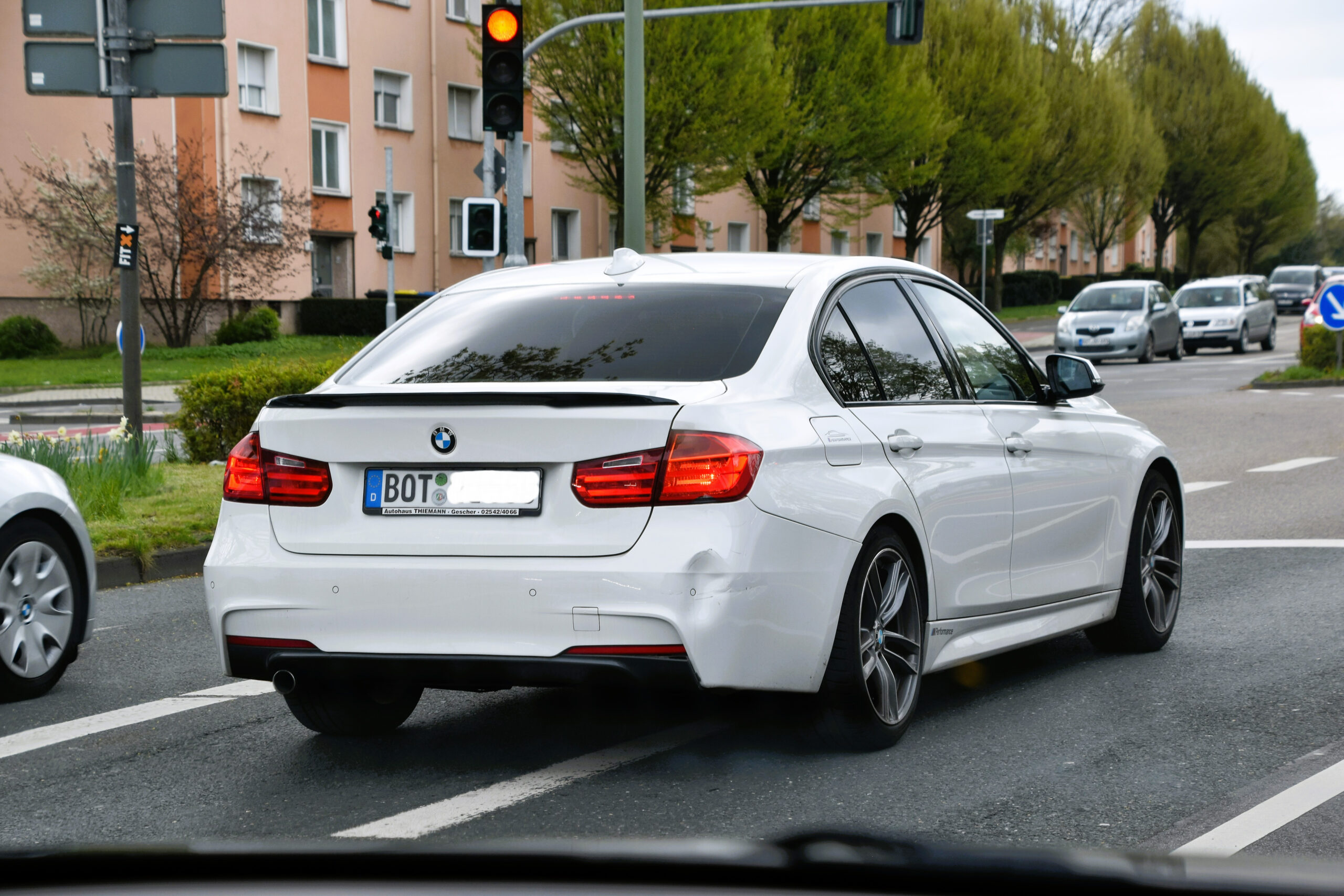
2. **BMW 3 Series**: Celebrated globally for its sporty driving dynamics, upscale interior, and innovative technology features, the BMW 3 Series embodies the quintessential luxury compact car experience. Its initial allure of performance and prestige often overshadows a less glamorous reality that emerges for many owners once the vehicle has accumulated significant mileage. This model, while a joy to drive, carries a reputation for becoming exceedingly demanding in terms of maintenance costs after the 100,000-mile mark.
According to Jacob Carter, the BMW 3 Series is known for demanding high maintenance, with a significant number of vehicles necessitating critical engine or electrical repairs around or shortly after reaching the 100,000-mile milestone. These aren’t minor fixes; they often involve complex systems that require specialized knowledge and expensive parts, contributing significantly to the overall cost of ownership. The luxury badge, unfortunately, often translates directly into luxury-level repair bills.
Beyond engine and electrical issues, the 3 Series also frequently experiences costly repairs related to its cooling system. These comprehensive failures, occurring with increased frequency as the vehicle ages, can quickly deplete a repair budget. While the driving experience remains exceptional, the financial implications of maintaining a high-mileage 3 Series can be a stark reminder of the trade-off between performance luxury and long-term practicality.
For those drawn to the premium driving experience of a BMW 3 Series, it’s imperative to approach high-mileage models with a clear understanding of the potential financial commitment. While the vehicle offers undeniable prestige and performance, its tendency for significant maintenance issues after 100,000 miles makes it a risky choice for budget-conscious buyers seeking long-term, low-cost ownership. Thorough pre-purchase inspections and detailed service history reviews are indispensable to gauge its remaining service life.
Car Model Information: 2018 Honda Civic EX
Name: BMW 3 Series
Manufacturer: BMW
Production: 1975–present
Class: Compact executive car
Predecessor: BMW 02 Series
Categories: 1970s cars, 1980s cars, 1990s cars, 2000s cars, 2010s cars
Summary: The BMW 3 series is a line of compact executive cars manufactured by the German automaker BMW since May 1975. It is the successor to the 02 series and has been produced in seven generations.
The first generation of the 3 Series was only available as a 2-door saloon; the model range expanded to include a 4-door saloon, 2-door convertible, 2-door coupé, 5-door estate, 5-door liftback (“Gran Turismo”; discontinued in 2019) and 3-door hatchback body styles. Since 2013, the coupé and convertible models have been marketed as the 4 Series; these styles no longer being included in the 3 Series.
The 3 Series is BMW’s best-selling model line, accounting for around 30% of the BMW brand’s annual total car sales, and has won numerous awards throughout its history. The M version of the 3 series, M3, debuted with the E30 M3 in 1986.
Get more information about: BMW 3 Series
Buying a high-performing used car >>>
Brand: BMW Model: 3 Series
Price: $19,974 Mileage: 64,299 mi.
Read more about: Unpacking the Generational Divide: 14 Classic Boomer Cars Millennials Just Aren’t Craving – And Why
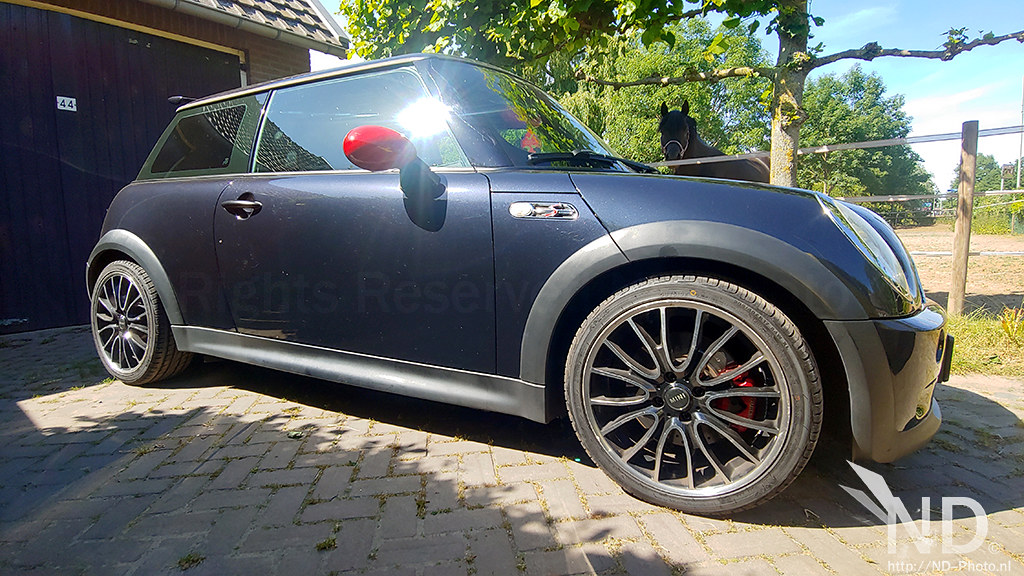
3. **Mini Cooper**: The Mini Cooper, with its compact and distinctive design, has cultivated a loyal following among drivers who appreciate its unique style and spirited performance. It stands out from the crowd with its retro-inspired aesthetics and engaging driving dynamics, promising an experience that is both fun and personal. However, beneath this charming exterior lies a potential for significant mechanical headaches that can emerge once the car begins to rack up miles.
Jacob Carter notes that the Mini Cooper is plagued by persistent concerns involving oil leaks, turbo failures, suspension, and electrical problems. These issues are not isolated incidents but rather common complaints that surface consistently as the vehicle ages. Furthermore, comprehensive analyses indicate that it is advisable to consider selling a Mini Cooper before it approaches the 100,000-mile mark, as retaining it beyond this point often ushers in an era of expensive and frequent repairs.
Specific model years have been identified as particularly troublesome, with the 2005, 2010, and 2014 models being noted for issues with oil leaks, timing chains, power steering boxes, and turbochargers. These components are critical to the vehicle’s operation, and their failure can lead to substantial repair bills due often to the high cost of specialized parts and labor. The intricate design and unique engineering contribute to the elevated expenses associated with these specific repairs, turning what was once a fun novelty into a financial burden.
Owners frequently report issues with the engine, cooling system, and transmission as the cars surpass the 100,000-mile threshold, further diminishing the appeal of owning a high-mileage Mini Cooper. While certain model years, such as the 2002, 2017 JCW, and 2022 SE, are cited as more reliable, the general consensus points to a challenging ownership experience for many older, higher-mileage models. The quirky charm often gives way to frustration when faced with the financial realities of its aging components.
Car Model Information: 2013 MINI Coupe Cooper S
Sp: uk
Caption: 1959 Morris Mini-Minor (first one built)
Name: Mini
Aka: Austin 850,Rover Mini,Austin Cooper,Austin Mini,Austin Partner,Austin Seven,Innocenti Mini,Leyland Mini,Morris 850,Morris Mascot,Morris Mini Minor,Riley Elf,Wolseley 1000 (South Africa),Wolseley Hornet
Layout: Front-engine, front-wheel-drive layout
Manufacturer: British Motor Corporation,British Leyland,Rover Group
Production: 1959–2000 (5.38 million)
Class: City car
BodyStyle: sedan (car),convertible,Station wagon,sedan delivery,coupe utility
Engine: BMC A-series engine,Straight-four engine
Designer: Alec Issigonis,John Sheppard (car designer)
Transmission: 4-speed manual,AP automatic transmission,5-speed manual (optional extra on some later models)
Length: cvt,cvt,cvt
Width: cvt
Height: cvt
Weight: cvt
Wheelbase: cvt,cvt
Related: Mini Moke,Austin Metro,Innocenti Mini,Mini Wildgoose,Mini Marcos
Successor: Austin Metro,Mini Hatch
Assembly: Panmure, New Zealand
Categories: 1960s cars, 1970s cars, 1980s cars, 1990s cars, 2000s cars
Summary: The Mini is a very small two-door, four-seat car, produced for four decades over a single generation, with many names and variants, by the British Motor Corporation (BMC) and its successors British Leyland and the Rover Group, and finally (briefly) under BMW ownership. Minis were built as fastbacks, estates, convertibles, and various other body styles. Minus a brief 1990s hiatus, from 1959 into 2000, an estimated 5.38 million of all variations combined were built, and the Mini’s engines also powered another 2 million Mini Metros, though the Mini eventually outlasted its successor.
Initially, the Mini was marketed under the Austin and Morris names, as the Austin Seven and Morris Mini-Minor; the Austin Seven was renamed Austin Mini in 1962 and Mini became a marque in its own right in 1969. Retrospectively, the car is known as the “Classic Mini” to distinguish it from the modern MINI family of vehicles produced since 2001 by German carmaker BMW, who took ownership of the Mini name following the sale of Rover Group in 2000.
This distinctive two-door car was designed for BMC by Sir Alec Issigonis. Its space-saving transverse engine and front-wheel drive layout – allowing 80% of the area of the car’s floorpan to be used for passengers and luggage – influenced a generation of car makers. The front-wheel-drive, transverse-engine layout were used in many other “supermini” style car designs such as Honda N360 (1967), Nissan Cherry (1970), and Fiat 127 (1971). The layout was also adapted for larger subcompact designs. In 1999, the Mini was voted the second-most influential car of the 20th century, behind the Ford Model T, and ahead of the Citroën DS and Volkswagen Beetle. It is also considered an icon of 1960s British popular culture.
The Mini Mark I had three major UK updates: the Mark II, the Clubman, and the Mark III. Within these was a series of variations, including an estate car, a pick-up, a van, and the Mini Moke, a jeep-like buggy. The performance versions, the Mini Cooper and Cooper “S”, were successful as both race and rally cars, winning the Monte Carlo Rally in 1964, 1965, and 1967. The Mini was manufactured in England at the Longbridge plant in Birmingham located next to BMC’s headquarters and at the former Morris Motors plant at Cowley, as well as in Australia (Victoria Park/Zetland BMC Australia factory) and later also in Spain (Authi), Belgium, Italy (Innocenti, as the Innocenti Mini), Chile, Malta, Portugal, South Africa, Uruguay, Venezuela, and Yugoslavia (IMV). In 1980, British Leyland launched the Mini’s follow-up, the Austin Metro, however the Mini outlasted it and continued to be produced at Longbridge until October 2000.
Get more information about: Mini
Buying a high-performing used car >>>
Brand: Mini Model: Cooper
Price: $12,425 Mileage: 78,956 mi.
Read more about: Navigating the Shifting Gears: Identifying Value and Volatility in the 2025 Classic Car Market
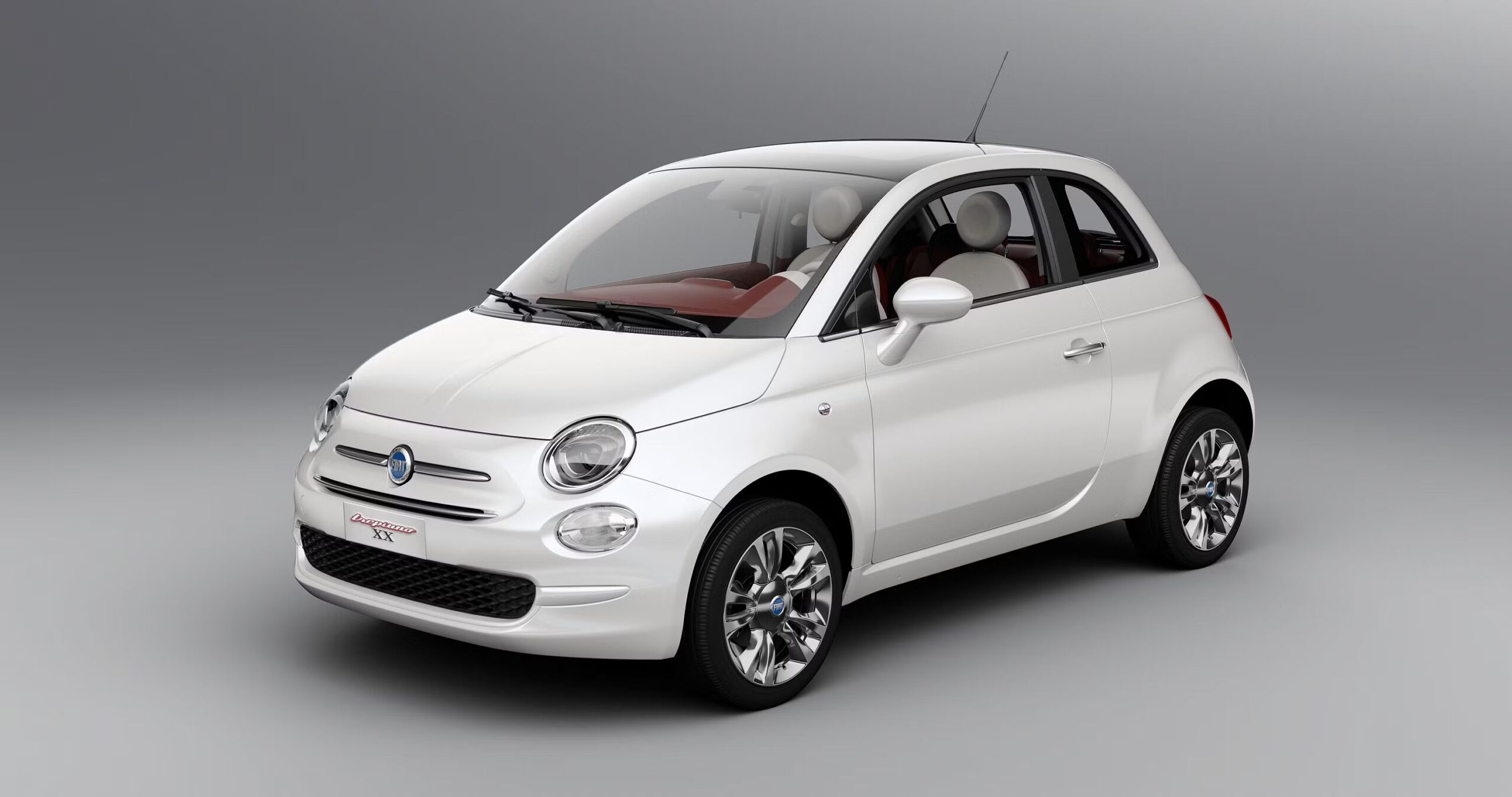
4. **Fiat 500**: The Fiat 500 embodies European charm in a compact, stylish package, offering exceptional maneuverability that makes it an ideal city car. Its adorable and diminutive stature has made it a popular choice for urban dwellers and those seeking a vehicle with distinct personality. However, the small size that contributes to its agility and appeal also introduces challenges concerning long-term reliability and the cost of maintenance, particularly as it ages past the 100,000-mile mark.
A significant concern for Fiat 500 owners is the frequent occurrence of engine problems, most notably oil leaks. These issues are exacerbated by the limited space within the engine compartment, which makes repairs more complex and, consequently, more expensive. What might be a relatively straightforward fix on another vehicle can become a labor-intensive, costly endeavor for a Fiat 500 due to restricted access.
Beyond engine woes, the Fiat 500, particularly models from 2008 onwards, often struggles with a range of other reliability issues. Owners report frequent transmission problems, electrical issues, and even failures related to the rear brake, steering column, airbags, and power steering. These critical component failures can lead to not only significant repair bills but also concerns regarding vehicle safety and operational integrity.
Adding to the list of long-term grievances are less severe but equally frustrating issues like persistent rattles, squeaks, and trim pieces falling off. While these might seem minor, they collectively detract from the car’s initial charm and aesthetic appeal, highlighting a general decline in build quality over time. Ultimately, the Fiat 500’s distinctive character is often overshadowed by these persistent and expensive mechanical problems, making it a less reliable choice for long-term ownership.
Car Model Information: 2012 FIAT 500 Abarth
Name: Fiat 500
Caption: 1970 Fiat 500 L
Aka: Puch 500
Manufacturer: Fiat Automobiles
Production: 1957–1975,3,893,294 units
Assembly: Turin,Desio
Designer: Dante Giacosa
Class: City car
BodyStyle: ubl
Layout: Rear-engine, rear-wheel drive layout
Doors: Suicide door,Car door#Conventional
Related: Autobianchi Bianchina,NSU/Fiat Weinsberg 500,Vignale Gamine,Autobianchi Giardiniera
Engine: Cubic centimetre,499 cc I2,594 cc I2
Transmission: Manual transmission
Wheelbase: {{convert,1840,mm,in,1,abbr=on
Abbr: on
Length: 2970 mm
Width: 1320 mm
Height: 1320 mm
Weight: 499 kg
Predecessor: Fiat 500 “Topolino”
Successor: Fiat 126,Fiat 500 (2007)
Sp: uk
Categories: 1960s cars, 1970s cars, All articles with unsourced statements, Articles containing Italian-language text, Articles with short description
Summary: The Fiat 500 (Italian: Cinquecento, pronounced [ˌtʃiŋkweˈtʃɛnto]) is an economy / city car that was manufactured and marketed by Fiat Automobiles from 1957 until 1975. It was sold as a two-door semi-convertible or saloon car and as a three-door panel van or estate car.
Launched as the Nuova (new) 500 in July 1957, as a successor to the 500 “Topolino”, it was an inexpensive and practical small car. Measuring 2.97 metres (9 feet 9 inches) long, and originally powered by a rear-mounted 479 cc two-cylinder, air-cooled engine, the 500 was 24.5 centimetres (9.6 inches) smaller than Fiat’s 600, launched two years earlier, and is considered one of the first purpose-designed city cars.
In 1959, Dante Giacosa received a Compasso d’Oro industrial design prize for the Fiat 500. This marked the first time a Compasso d’Oro was awarded to an automotive manufacturer.
Get more information about: Fiat 500
Buying a high-performing used car >>>
Brand: Fiat Model: 500
Price: $5,999 Mileage: 103,245 mi.
Read more about: Boomer Dream Machines: 14 Classic Car Icons Millennials Are Overlooking and Why They’re Missing the Mark
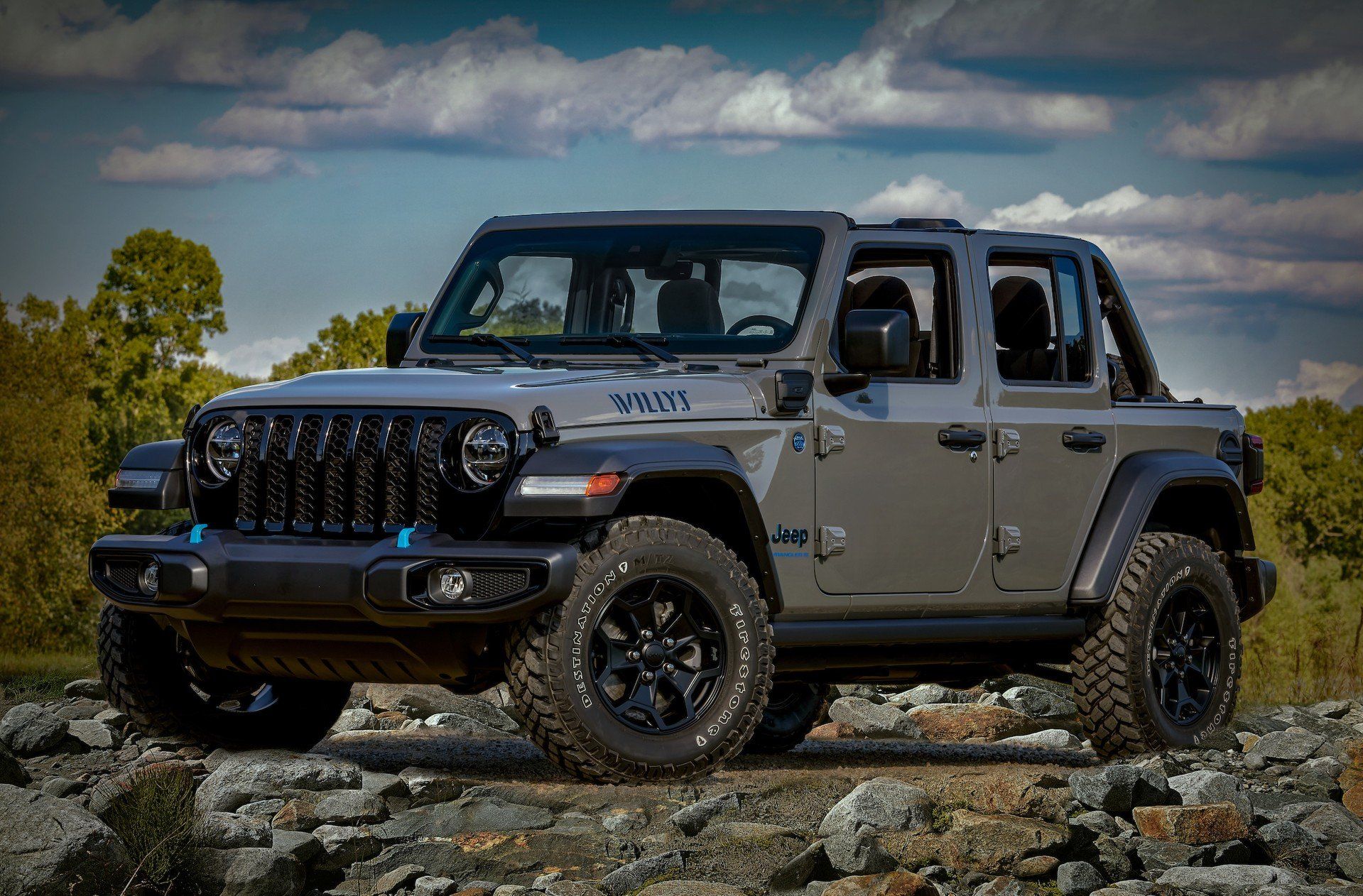
5. **Jeep Wrangler**: The Jeep Wrangler is an iconic off-road SUV, instantly recognizable for its rugged design and exceptional capabilities in tackling various terrains. It promises adventure and unparalleled freedom, attracting a dedicated following of enthusiasts who value its robust build and legendary performance in challenging environments. However, this dedication to off-roading prowess often comes with a trade-off in terms of everyday durability and maintenance requirements, especially as the vehicle accumulates significant mileage.
While the Wrangler undeniably offers an enjoyable off-roading experience, Jacob Carter points out its susceptibility to specific problems that necessitate frequent repair work. Chief among these are issues related to rust, steering, and suspension. The very nature of its intended use—traversing rough terrain—can accelerate wear and tear on these critical components, leading to a need for consistent attention and costly repairs after 100,000 miles.
As Wranglers surpass the 100,000-mile mark, owners frequently report more severe mechanical issues. These include transmission failures and engine troubles, which represent a significant financial burden. The complexity of these repairs, combined with the specialized parts often required for such a unique vehicle, contributes to the high cost of maintaining a high-mileage Wrangler.
Despite its popularity among adventure enthusiasts, the Wrangler’s reliability over long distances and extended periods is a significant concern for many owners. The consistent need for repairs on rust-prone areas, steering components, suspension, and increasingly, powertrain elements, positions the high-mileage Jeep Wrangler as a vehicle that can quickly become a significant money pit. Prospective buyers must weigh the thrill of its capabilities against the reality of its long-term maintenance demands.
Car Model Information: 2017 Jeep Wrangler Unlimited Rubicon
Name: Jeep Wrangler
Caption: Jeep Wrangler Unlimited, Sahara edition
Manufacturer: Jeep
Class: Compact SUV
Production: 1986–present
Predecessor: Jeep CJ
Layout: Front-engine, rear-wheel-drive layout,rear-wheel drive
Chassis: Body-on-frame
Related: AIL Storm
Categories: 1980s cars, 1990s cars, 2000s cars, 2010s cars, All-wheel-drive vehicles
Summary: The Jeep Wrangler is a series of compact and mid-size four-wheel drive off-road SUVs manufactured by Jeep since 1986, and currently in its fourth generation. The Wrangler JL, the most recent generation, was unveiled in late 2017 and is produced at Jeep’s Toledo Complex.
The Wrangler is a direct progression from the World War II Jeep, through the CJ (Civilian Jeeps) produced by Willys, Kaiser-Jeep, and American Motors Corporation (AMC) from the mid-1940s through the 1980s. Although neither AMC nor Chrysler (after it purchased AMC in 1987) have claimed that the Wrangler was a direct descendant of the original military model — both the CJ Jeeps and the conceptually consistent Wrangler, with their solid axles and open top, have been called the Jeep model as central to Jeep’s brand identity as the rear-engine 911 is to Porsche.
Similar to the Willys MB and the CJ Jeeps before it, all Wrangler models continue to use a separate body and frame, rigid live axles both front and rear, a tapering nose design with flared fenders, a fold-flat windshield and can be driven without doors. Also, with few exceptions, they have part-time four-wheel drive systems, with the choice of high and low gearing, and standard open bodies with removable hard or soft tops. However, the Wrangler series was specifically redesigned to be safer and more comfortable on-road, to attract more daily drivers, by upgrading its suspension, drivetrain, and interior, compared to the CJ line. The suspension on all Wranglers included trackbars and anti-roll bars, and, from the 1997 TJ onwards, front and rear coil springs instead of the previous leaf springs.
From 2004 on, the Wrangler has been complemented with long-wheelbase versions, called Wrangler Unlimited. 2004-2006 models were longer versions with 2 doors. In 2004 only automatic transmission-equipped “Unlimited” versions were sold. In 2005 both an automatic and manual 6-speed (NSG-370) were offered. Since 2007, the long-wheelbase Wranglers were four-door models, offering over 20 in (508 mm) more room. By mid-2017 the four-door models represented three-quarters of all new Wranglers on the market.
Get more information about: Jeep Wrangler
Buying a high-performing used car >>>
Brand: Jeep Model: Wrangler
Price: $31,425 Mileage: 67,306 mi.
Read more about: Buyer Beware: 15 Popular Cars That Seriously Disappointed Owners, According to Driver Regrets and Reliability Data
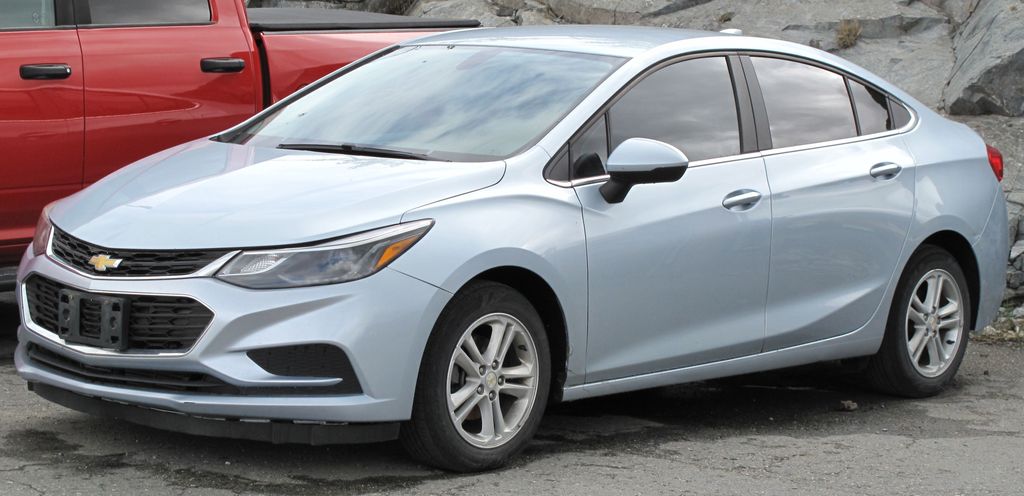
6. **Chevrolet Cruze**: The Chevrolet Cruze has been a popular choice for many consumers, offering an affordable entry point into the compact sedan market with the promise of good fuel economy, sometimes achieving around 48 mpg. Its comfortable ride and practical features initially make it an appealing option for a daily driver. However, the allure of affordability often fades for owners once the odometer begins to climb past the 100,000-mile mark, revealing a propensity for costly mechanical failures.
According to Car Time, specific model years, notably 2011-2014, should be approached with caution due to a documented history of significant issues. These include widespread transmission failure, faulty shifting, and engine problems that become increasingly apparent with higher mileage. Such powertrain issues are not only inconvenient but also represent some of the most expensive repairs a vehicle can incur, turning the Cruze into a substantial financial drain.
Furthermore, the Chevrolet Cruze has garnered criticism for other persistent engine-related problems, including intake manifold issues and turbocharger failures. Owners also frequently report coolant leaks and overheating problems, which can lead to more extensive engine damage if not addressed promptly. These issues contribute to a concerning pattern of unreliability that undermines the car’s initial appeal as an economical option.
Electrical issues and a sudden loss of power while driving are additional complaints that commonly surface as the Cruze ages. While it offers a comfortable ride and satisfactory fuel economy, its durability over long distances and its tendency for these severe and expensive mechanical problems present a significant drawback for anyone seeking a dependable, low-cost vehicle after the 100,000-mile threshold. Careful consideration of these known issues is crucial for potential buyers.
Car Model Information: 2014 Chevrolet Cruze 1LT
Name: Chevrolet Cruze
Caption: 2017 Chevrolet Cruze LT sedan
Manufacturer: General Motors
Aka: unbulleted list
Production: unbulleted list
ModelYears: 2011–2019 (North America),2026 (Middle East)
Class: Compact car
Layout: Front-engine, front-wheel drive
Predecessor: unbulleted list
Successor: unbulleted list
Categories: 2010s cars, 2020s cars, ANCAP small family cars, All articles containing potentially dated statements, All articles with dead external links
Summary: The Chevrolet Cruze is a compact car produced by General Motors from 2008 through 2023. It was designated as a globally developed, designed, and manufactured four-door compact sedan, complemented by a five-door hatchback body variant from 2011, and a station wagon in 2012. The Cruze replaced several compact models, including the Chevrolet Optra which was sold internationally under various names, the Chevrolet Cobalt sold exclusively in North America, and the Australasian-market Holden Astra.
The Cruze was released in 2008 for the South Korean market as the Daewoo Lacetti Premiere prior to the adoption of its international name in 2011, when the Daewoo brand was discontinued. In Australasia, the model was sold between 2009 and 2016 as the Holden Cruze. In 2016, the Cruze sedan was restyled and renamed for the Australasian market as the Holden Astra Sedan, as a sedan complement to the Holden Astra family.
Due to the market shift towards SUVs and decreasing sales, the Cruze has been gradually phased out. Production of the Cruze in South Korea ended in 2018 as part of restructuring of GM Korea, which in turn ceased supply of the Holden Astra Sedan to Australasia. In the United States and Mexico, production ended in 2019, while production in China ended in 2020. Production continued in Argentina until 2023. It was replaced by the Monza in China, which is known as the Cavalier in Mexico.
In 2025, the Cruze was revived as a rebadged Chevrolet Monza for the Middle East.
Previously, the nameplate has been used for a version of a subcompact hatchback car produced under a joint venture with Suzuki from 2001 to 2007, and was based on the Suzuki Ignis.
Get more information about: Chevrolet Cruze
Buying a high-performing used car >>>
Brand: Chevrolet Model: Cruze
Price: $7,900 Mileage: 88,975 mi.
Read more about: 15 Cars That Become Costly Money Pits After 100,000 Miles: Essential Insights for Savvy Buyers
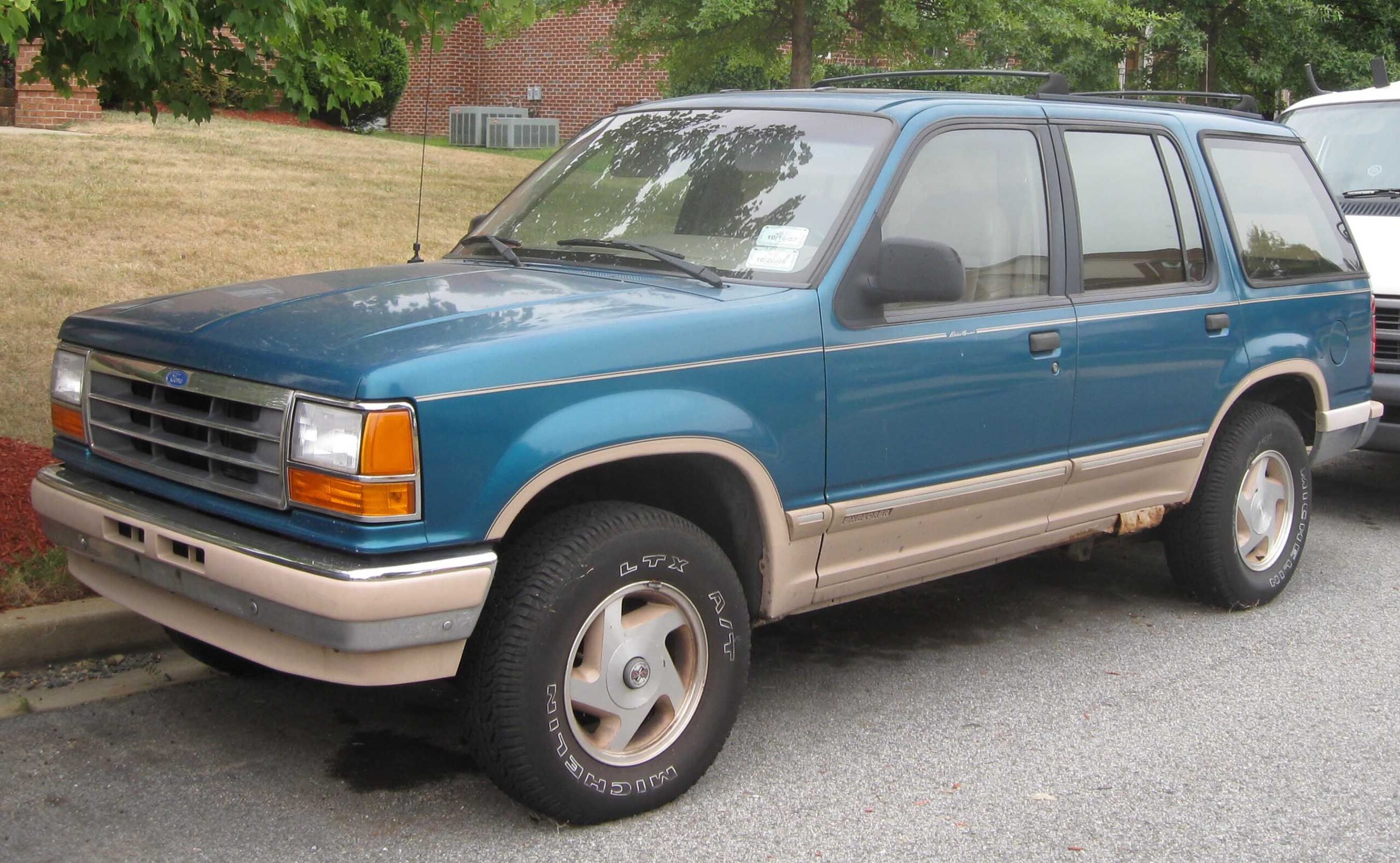
7. **Ford Explorer**: The Ford Explorer stands as an iconic and trailblazing SUV with a long history in the American automotive landscape. Renowned for its versatility, spaciousness, and often its capability, it has served as a family hauler and adventure vehicle for decades. However, its history is not without a “checkered” past, particularly when it comes to the long-term reliability of certain model years, which have earned a reputation for becoming problematic after significant mileage.
For consumers in the market for a used Ford Explorer, CoPilot for Car Shopping strongly recommends avoiding models from the 2002-2006 model years. These particular iterations are notoriously plagued by severe transmission issues. Transmission failures are among the most expensive repairs a vehicle can face, often requiring a complete rebuild or replacement, which can quickly outweigh the value of a high-mileage used SUV. This makes them a significant financial risk for buyers seeking a vehicle that will last well beyond the 100,000-mile mark.
In addition to the pervasive transmission problems, these early 2000s Explorers, specifically the 2002-2005 models, also exhibit high rates of engine failure. An engine failure is catastrophic, essentially rendering the vehicle unusable without an investment that is often prohibitive for a used car. The combination of severe transmission and engine issues positions these model years as definite money pits for unsuspecting buyers, highlighting a critical period in the Explorer’s history where reliability was significantly compromised.
While the focus here is on post-100,000-mile mechanical reliability, it is also worth noting that earlier models, specifically 1999 to 2002 Ford Explorers with two-doors and two-wheel drive, have been cited for higher rates of rollovers and associated driver deaths. This further reinforces the need for extreme caution and thorough research when considering older used Explorer models, extending beyond just mechanical longevity to include safety concerns. Understanding these historical issues is vital for anyone considering these vehicles for long-term ownership.”
Car Model Information: 2018 Ford Explorer Sport
Name: Ford Explorer
Caption: Sixth-generation Ford Explorer
Manufacturer: Ford Motor Company
Production: 1990–present
ModelYears: 1991–present
Class: unbulleted list
Chassis: unbulleted list
Predecessor: Ford Bronco II
Successor: Ford Territory (Australia)
Categories: 2000s cars, 2010s cars, 2020s cars, All-wheel-drive vehicles, All Wikipedia articles in need of updating
Summary: The Ford Explorer is a range of SUVs manufactured by the Ford Motor Company since the 1991 model year. The first five-door SUV produced by Ford, the Explorer, was introduced as a replacement for the three-door Bronco II. As with the Ford Ranger, the model line derives its name from a trim package previously offered on Ford F-Series pickup trucks. As of 2020, the Explorer became the best-selling SUV in the American market.
Currently in its sixth generation, the Explorer has featured a five-door wagon body style since its 1991 introduction. During the first two generations, the model line included a three-door wagon (directly replacing the Bronco II). The Ford Explorer Sport Trac is a crew-cab mid-size pickup derived from the second-generation Explorer. The fifth and sixth generations of the Explorer have been produced as the Ford Police Interceptor Utility (replacing both the Ford Crown Victoria Police Interceptor and the Ford Police Interceptor Sedan).
The Explorer is slotted between the Ford Edge and Ford Expedition within North America’s current Ford SUV range. The model line has undergone rebadging several times, with Mazda, Mercury, and Lincoln each selling derivative variants. Currently, Lincoln markets a luxury version of the Explorer as the Lincoln Aviator.
For the North American market, the first four generations of the Explorer were produced by Ford at its Louisville Assembly Plant (Louisville, Kentucky) and its now-closed St. Louis Assembly Plant (Hazelwood, Missouri). Ford currently assembles the Explorer alongside the Lincoln Aviator and the Police Interceptor Utility at its Chicago Assembly Plant (Chicago, Illinois).
Get more information about: Ford Explorer
Buying a high-performing used car >>>
Brand: Ford Model: Explorer
Price: $19,780 Mileage: 123,120 mi.
Read more about: Buyer Beware: 15 Popular Cars That Seriously Disappointed Owners, According to Driver Regrets and Reliability Data
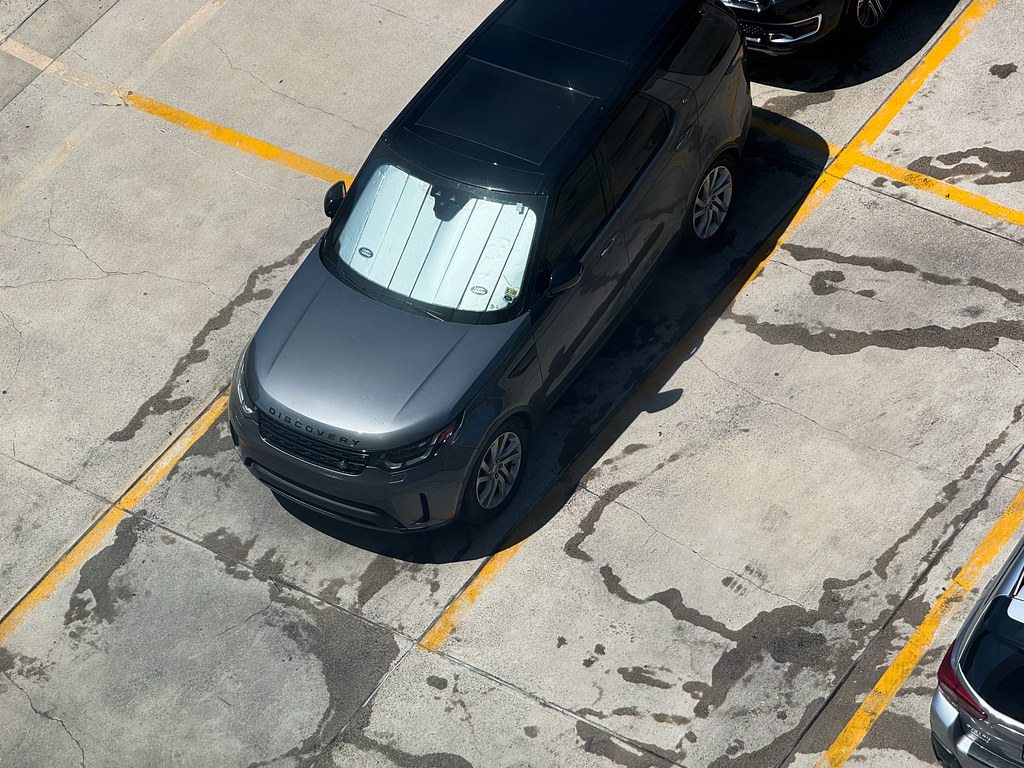
8. **Land Rover Discovery**: The Land Rover Discovery projects an image of robust capability and sophisticated design, often attracting buyers seeking a blend of luxury and off-road prowess. Its handsome exterior and comfortable interior provide an initial allure, promising a vehicle that combines adventure with refinement. However, prospective owners, especially those considering models with higher mileage, should be acutely aware of a prevailing reputation for encountering a specific set of mechanical and electrical challenges once these vehicles accumulate significant mileage.
Jacob Carter, a proprietor specializing in car maintenance and repairs, highlights the Land Rover Discovery’s tendency to develop problems related to its air suspension system. These issues can be complex and exceedingly expensive to diagnose and repair, significantly affecting ride quality, vehicle stability, and potentially compromising safety. Such sophisticated systems often require specialized tools and expertise, contributing to the elevated cost of repair.
Furthermore, the model has garnered a reputation for experiencing various electrical anomalies, which can manifest in unpredictable ways, from minor glitches to critical system failures. These electrical issues can be particularly challenging for technicians to resolve, often leading to prolonged garage time and substantial bills, adding to the frustration of ownership. The intricate wiring and numerous electronic components, while contributing to luxury, also present more points of failure as the vehicle ages.
Perhaps most concerning for long-term reliability is the reported susceptibility to premature transmission failure. A complete transmission overhaul or replacement is one of the most financially draining repairs a vehicle can undergo, frequently surpassing the market value of an older, higher-mileage Discovery. These collective issues indicate that while the Discovery may offer an impressive initial experience, its long-term ownership costs, particularly beyond 100,000 miles, demand a cautious approach from buyers, as it risks becoming a significant financial burden.
Car Model Information: 2018 Honda Civic EX
Sp: uk
Name: Land Rover Discovery
Caption: 2018 Land Rover Discovery
Manufacturer: Land Rover Ltd.,Jaguar Land Rover
Production: 1989–present
Class: Executive car,Sport utility vehicle
Layout: Front-engine, four-wheel-drive
Categories: All-wheel-drive vehicles, All articles lacking reliable references, All articles with unsourced statements, Articles lacking reliable references from December 2010, Articles with short description
Summary: The Land Rover Discovery is a series of five or seven-seater family SUVs, produced under the Land Rover marque, from the British manufacturer Land Rover, and later Jaguar Land Rover. The series is currently in its fifth iteration (or generation, according to the manufacturer), the first of which was introduced in 1989, making the Discovery the first new model series since the launch of the 1970 Range Rover – on which it was based – and only the third new product line since the conception of the Land Rover (vehicle and brand) by Rover in 1948. The model is sometimes called influential, as one of the first to market a true off-road capable family car.
Although the Range Rover had originally been designed as an everyday four wheel drive car that could be used as both a utility vehicle and a family car, it had progressively moved upmarket through its life to evolve into a luxury vehicle sold at a much higher price point. The Discovery was intended to fulfill the role the Range Rover originally was intended for; a segment which was now dominated by Japanese rivals such as the Nissan Patrol, Mitsubishi Pajero and Toyota Land Cruiser. Although positioned below the Range Rover in the company’s line-up, the vehicle was both longer and higher, offered more room in the back, and optionally also more seats. Space utilization became more sophisticated in later generations, but the series keeps offering seats for seven occupants. Despite originally being sold as an affordable alternative to the Range Rover, the Discovery has also progressively moved upmarket through its successive generations to become a bonafide luxury SUV.
The second Discovery (1998) was called the Series II, and although it featured an extended rear overhang, it was otherwise an extensive facelift, which carried over the 100 in (2,540 mm) wheelbase frame and rigid, live front and rear axles derived from the original Range Rover.
The third generation – succeeding the Series II in 2004 – was either called the Discovery 3 or simply LR3 (in North America and the Middle East). This was a new ground up design, the first all-original design for the Discovery. Although it followed the 2002 third generation Range Rover, also switching to fully independent suspension, it still received a separate, but integrated body and frame (IBF) structure. The fourth generation, as of 2009 – like the series II, was again mainly an update of the new generation – marketed as the Discovery 4, or Land Rover LR4 for North American and Middle Eastern markets.
The fifth generation of the Discovery, introduced in 2017, no longer sports a numeric suffix. Unlike the previous two generations, it now benefits from a unitized body structure, making it lighter than its predecessor.
Get more information about: Land Rover Discovery
Buying a high-performing used car >>>
Brand: Land Rover Model: Discovery
Price: $19,974 Mileage: 64,299 mi.
Read more about: Beyond 250,000 Miles: 14 Indestructible SUVs That Define Automotive Longevity
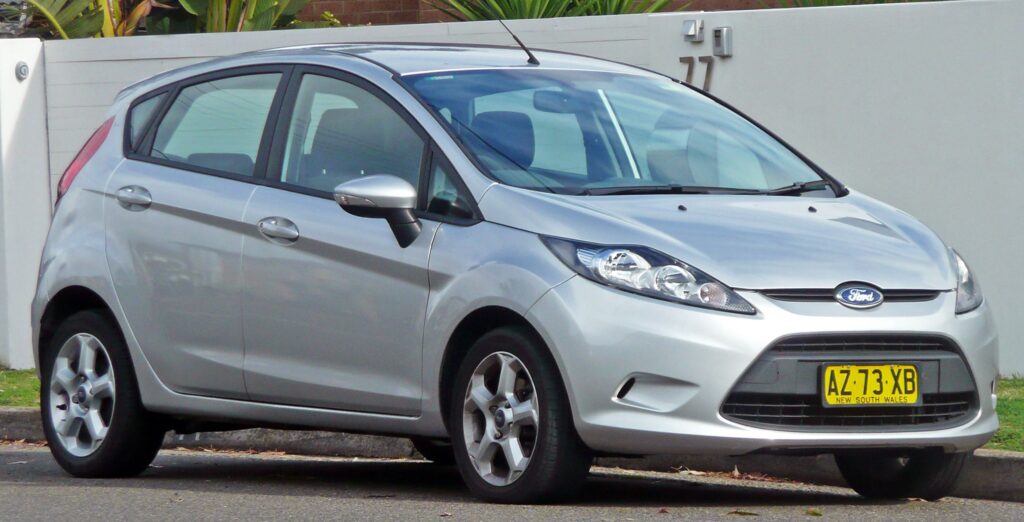
9. **Ford Fiesta**: The Ford Fiesta has carved a niche for itself as a compact car celebrated for its agile handling and impressive fuel efficiency, making it an appealing choice for urban commuters and those prioritizing economical daily driving. Its subcompact dimensions and responsive nature offer a practical solution for navigating congested city streets and tight parking spaces with ease. However, beneath this facade of economic practicality lies a concerning track record of mechanical issues that tend to surface as the vehicle ages and accrues substantial mileage.
According to Jacob Carter, the Ford Fiesta has a documented history of encountering persistent transmission problems. These issues can range from hesitant shifting and noticeable shuddering to complete transmission failure, significantly impacting the driving experience and potentially compromising the safety of the vehicle. Such repairs are often extensive and costly, presenting a substantial financial burden that can quickly erode the initial savings gained from the car’s fuel efficiency and lower purchase price, turning economy into extravagance.
Beyond the well-documented transmission woes, the Fiesta also tends to develop various electrical issues as it surpasses the 100,000-mile mark. These can include malfunctions with power windows, the infotainment system, or even critical engine management components, leading to unpredictable operation and additional, often puzzling, repair expenses. The accumulation of these problems transforms what was once an economical and enjoyable car into a source of ongoing frustration and financial drain for its owners, making reliable daily use challenging.
For consumers seeking a durable and low-maintenance vehicle for the long haul, a high-mileage Ford Fiesta warrants extremely careful consideration. While its initial attributes are attractive, the high probability of expensive transmission and electrical repairs post-100,000 miles strongly suggests that it might be prudent to explore other options. Comprehensive due diligence, including a detailed service history review and a pre-purchase inspection by a trusted mechanic, is absolutely essential to mitigate these known and costly risks.
Car Model Information: 2016 Ford Fiesta SE
Name: Ford Fiesta
Manufacturer: Ford Motor Company
Production: June 1976 – July 2023
Class: Supermini
BodyStyle: hatchback
Layout: Front-engine, front-wheel-drive layout
Successor: Ford Puma (crossover)
ModelYears: 1978–1980, 2011–2019 (North America)
Categories: 1980s cars, 1990s cars, 2000s cars, 2010s cars, 2020s cars
Summary: The Ford Fiesta is a supermini car that was marketed by Ford from 1976 to 2023 over seven generations. Over the years, the Fiesta has mainly been developed and manufactured by Ford’s European operations, and had been positioned below the Escort (later the Focus).
Ford had sold over 15 million Fiestas from 1976 to July 2011, making it one of the best-selling Ford nameplates behind the Escort and the F-Series. It has been manufactured in the United Kingdom, Germany, Spain, Brazil, Argentina, Venezuela, Mexico, Taiwan, China, India, Thailand, and South Africa.
The Fiesta was discontinued in 2023, after over 22 million units had been made. The final Ford Fiesta rolled off the production line on 7 July 2023.
Get more information about: Ford Fiesta
Buying a high-performing used car >>>
Brand: Ford Model: Fiesta
Price: $9,995 Mileage: 12,582 mi.
Read more about: 15 Cars That Become Costly Money Pits After 100,000 Miles: Essential Insights for Savvy Buyers
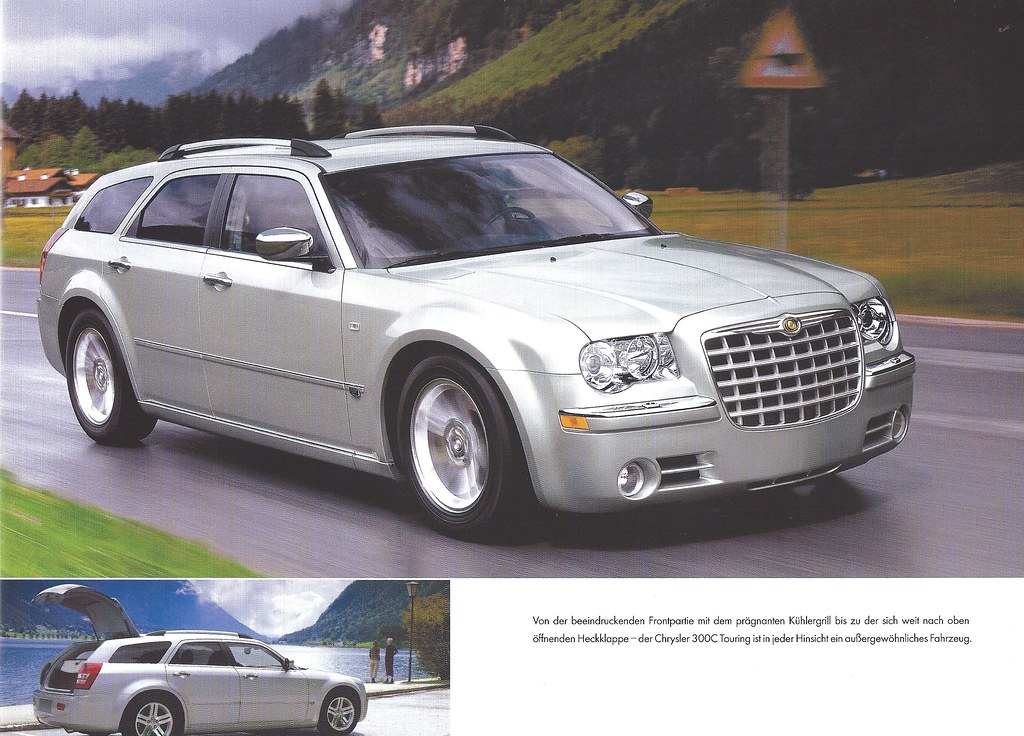
10. **Chrysler 200**: The Chrysler 200 entered the market as a midsize sedan, aiming to blend sleek design with a comfortable interior, offering a seemingly balanced proposition of style and practicality for everyday drivers. Its contemporary aesthetics and emphasis on passenger comfort initially made it an attractive option in a competitive segment, particularly for those seeking a modern sedan experience. Yet, for those considering the Chrysler 200 for long-term ownership, especially as it accumulates miles, a critical aspect of its reliability profile becomes increasingly apparent.
Jacob Carter indicates that the Chrysler 200 exhibits a notable frequency of requiring engine, transmission, and electrical repairs. What is particularly concerning about this model is that these significant issues are often necessitated at relatively low mileage levels, sometimes well before the 100,000-mile mark. This pattern indicates a foundational lack of robust longevity and durability in critical powertrain and electrical components, making it a red flag for any buyer.
Such powertrain and electrical system failures are among the most expensive problems a vehicle can incur, turning an initially practical purchase into a premature financial liability. These aren’t minor fixes but often involve complex, labor-intensive procedures and pricey specialized parts. The early onset of these problems suggests that even if a Chrysler 200 manages to reach or surpass the 100,000-mile threshold, it likely does so having already undergone, or being in dire need of, substantial and costly interventions.
The inherent design or manufacturing flaws that lead to these persistent issues are only exacerbated with higher mileage, virtually guaranteeing an escalating spiral of repair expenses for the unsuspecting owner. This consistent pattern of unreliability significantly diminishes the vehicle’s long-term value proposition, making it a questionable investment for durability. Therefore, the Chrysler 200 stands out as a vehicle that prospective buyers should approach with extreme caution, particularly if seeking a durable car to last well beyond 100,000 miles without becoming a burdensome money pit.
Car Model Information: 2015 Chrysler 200 S
Name: Chrysler 200
Manufacturer: Chrysler
Production: 2010–2016
ModelYears: 2011–2017
Assembly: Sterling Heights, Michigan
Class: Mid-size car
Sp: us
Predecessor: Chrysler Sebring
Categories: 2010s cars, All articles with dead external links, All articles with unsourced statements, Articles with dead external links from July 2020, Articles with permanently dead external links
Summary: The Chrysler 200 is a mid-size sedan that was manufactured and marketed by Chrysler from model years 2011 to 2017 across two generations in four-door sedan and two-door convertible (first generation only) body styles.
The 200 nameplate debuted on the 200C, a prototype hybrid vehicle shown at the 2009 North American International Auto Show in Detroit and based on the Chrysler 300. The 200C concept was engineered to accept either traditional gasoline, hybrid or full-electric powertrains.
Get more information about: Chrysler 200
Buying a high-performing used car >>>
Brand: Chrysler Model: 200
Price: $7,200 Mileage: 122,275 mi.
Read more about: From Dad’s Pride to Your Disdain: Why Millennials Are Ditching These 15 Classic Boomer Cars
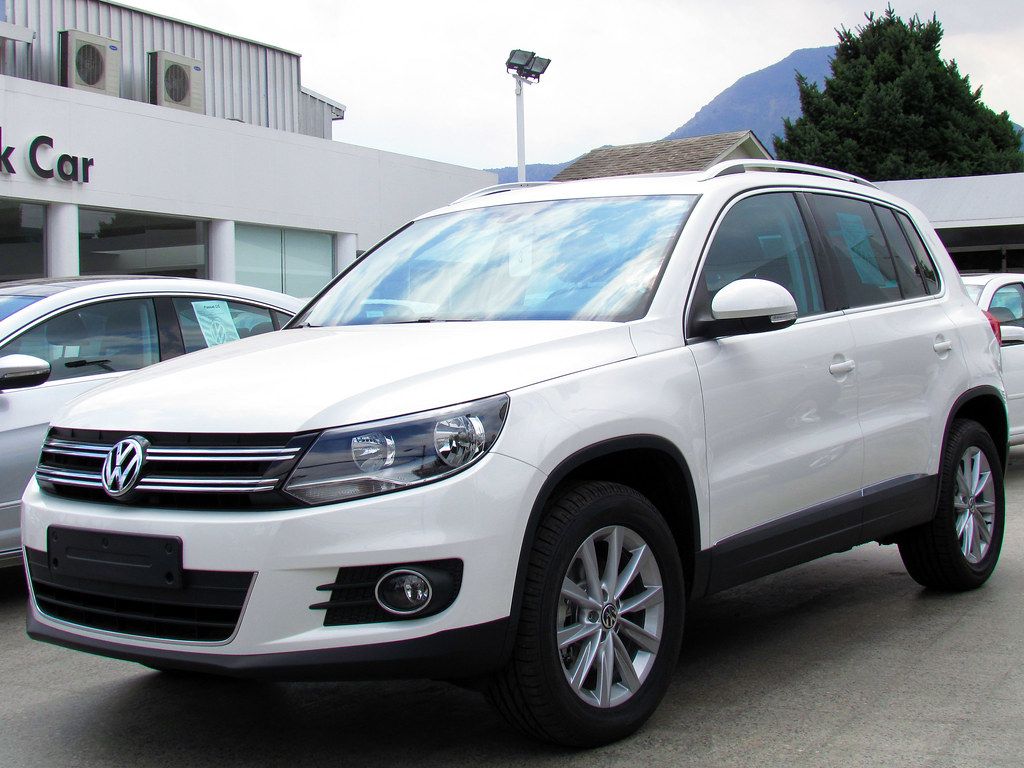
11. **Volkswagen Tiguan**: The Volkswagen Tiguan is frequently recognized for its stylish design and comfortable interior, positioning it as an appealing choice for consumers who seek a harmonious blend of aesthetic appeal and driving comfort in a compact SUV. Its European engineering, refined driving dynamics, and spacious cabin contribute to an initial impression of quality and reliability. However, this perception of dependability often faces a significant challenge once the Tiguan begins to amass considerable mileage, particularly as it crosses the six-figure mark.
Jacob Carter identifies a specific and costly problem that frequently plagues the Volkswagen Tiguan: significant transmission issues. These problems are reported to often emerge shortly after the vehicle surpasses the 100,000-mile threshold, transforming what was once a smooth and enjoyable ride into a source of considerable concern and financial stress. Transmission repairs, given their complexity and the specialized nature of components, represent some of the most expensive fixes a vehicle owner can face, often requiring extensive labor.
The onset of these transmission difficulties can severely undermine the Tiguan’s value and utility as a long-term family vehicle or daily commuter. Owners may find themselves facing repair bills that are disproportionate to the vehicle’s depreciated market value, forcing difficult decisions about whether to invest heavily in repairs or to prematurely replace the vehicle entirely. This characteristic makes a high-mileage Tiguan a particularly risky proposition for those looking for sustained value and low ownership costs.
For potential buyers attracted to the Tiguan’s design and comfort, it is imperative to conduct extensive research into its service history, especially focusing on transmission maintenance and any reported issues. Without a clear understanding of its past and a thorough pre-purchase inspection, investing in a Volkswagen Tiguan with over 100,000 miles carries a high risk of incurring substantial and unexpected repair costs, quickly turning a stylish SUV into a significant financial burden that outweighs its initial appeal.
Car Model Information: 2014 Volkswagen Tiguan Auto SEL
Name: Volkswagen Tiguan
Manufacturer: Volkswagen
Layout: 4motion
Class: Compact crossover SUV
BodyStyle: Sport utility vehicle
Chassis: Unibody
Production: 2007–present
ModelYears: 2009–present (North America)
Categories: 2010s cars, 2020s cars, All-wheel-drive vehicles, Articles with short description, CS1 Indonesian-language sources (id)
Summary: The Volkswagen Tiguan (German pronunciation: [ˈfɔlksˌvaːɡn̩ ˈtiːɡu̯aːn]) is a sport utility vehicle produced by German manufacturer Volkswagen since 2007, sitting between the smaller T-Roc and the larger Touareg in the company’s crossover SUV range. The first generation was based on the PQ46 platform, while the second generation, released in 2016, utilizes the Volkswagen Group MQB A2 platform. It is generally considered to be a medium-sized SUV in Europe, while in North America it is considered to be a compact crossover SUV.
The name Tiguan is a portmanteau of the German words Tiger (“tiger”) and Leguan (“iguana”) and won a naming contest by German car magazine publisher Auto Bild—from a field of names that also included Namib, Rockton, Samun and Nanuk.
As of the spring of 2020, six million units had been sold worldwide, with 910,926 units being manufactured in 2019 alone, making the Tiguan the best-selling car overall in the Volkswagen Group. It was also the best-selling SUV in Europe.
Get more information about: Volkswagen Tiguan
Buying a high-performing used car >>>
Brand: Volkswagen Model: Tiguan
Price: $9,865 Mileage: 94,008 mi.
Read more about: 15 Cars That Become Costly Money Pits After 100,000 Miles: Essential Insights for Savvy Buyers
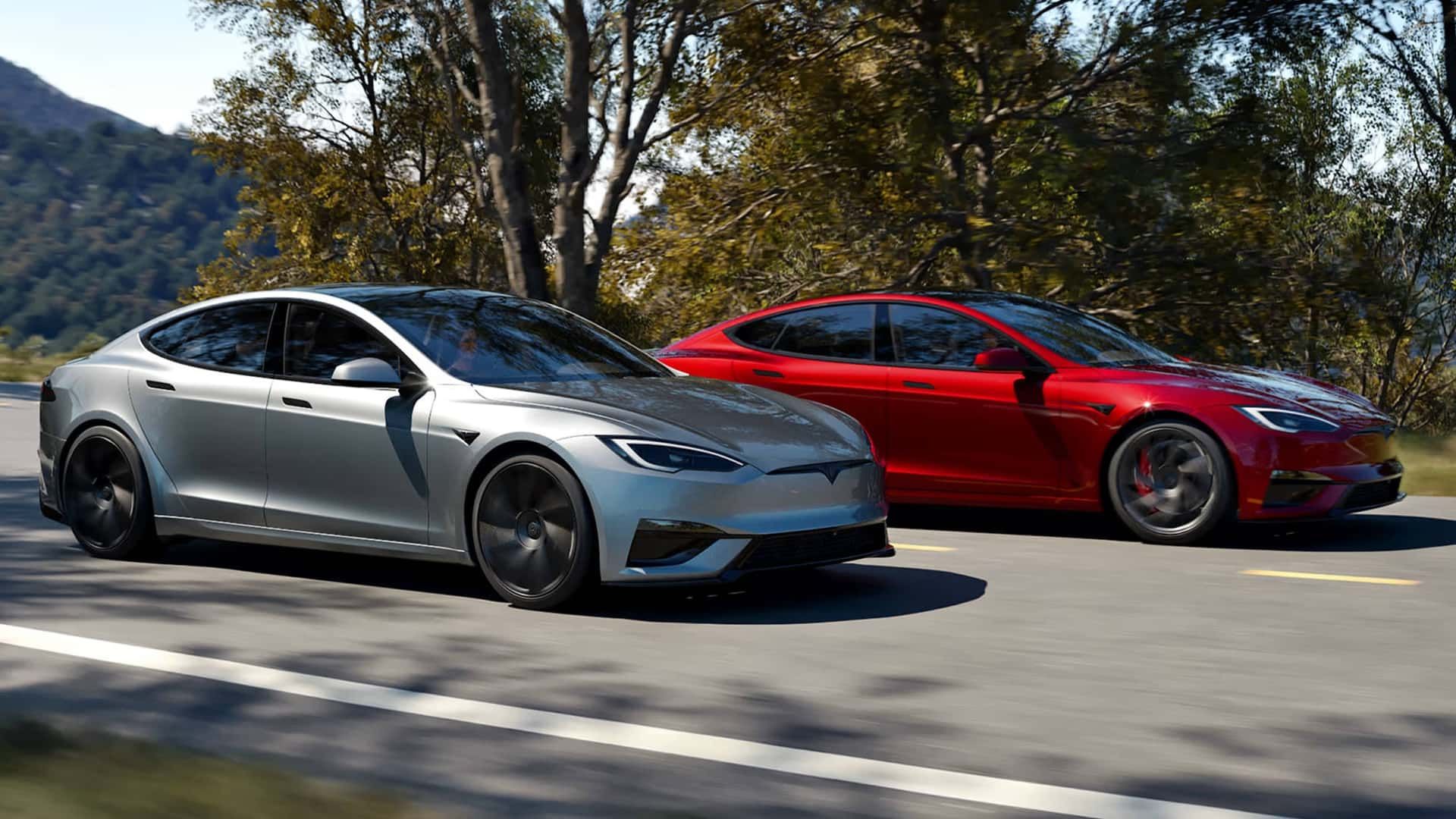
12. **Tesla Model S**: The Tesla Model S has undeniably revolutionized the automotive landscape, celebrated for its impressive acceleration, long-range capabilities, and seamless integration of cutting-edge technology that sets new benchmarks for electric vehicles. Its sleek design, sophisticated features, and commitment to sustainable driving offer a highly desirable ownership experience, particularly for those at the forefront of automotive innovation. Yet, for all its groundbreaking attributes, the Model S presents a unique and substantial financial consideration for long-term owners once it reaches a certain mileage milestone.
According to Jacob Carter, a critical and exceptionally costly aspect of owning a high-mileage Tesla Model S is the potential demand for a battery pack replacement. This significant investment often becomes necessary around or shortly after the vehicle reaches the 100,000-mile mark, a point at which the battery’s performance and capacity may have degraded significantly. Unlike traditional internal combustion engine vehicles, where engine or transmission issues are primary concerns, the battery pack is the heart of an EV, and its degradation or failure necessitates an immensely expensive repair or replacement.
The cost associated with replacing a Tesla battery pack can run into many thousands of dollars, representing a financial outlay that can easily rival or even exceed the remaining market value of a high-mileage Model S. This particular expense stands as a stark reminder that while the car’s technology is advanced and its initial running costs low, the long-term cost of maintaining its peak performance and core functionality can be prohibitive, effectively making it a “money pit” in an entirely new category for electric vehicles.
Prospective buyers of a used Tesla Model S with over 100,000 miles must factor in this potential battery replacement cost as a major part of their ownership projections. While the allure of its performance and technology is undeniably strong, the practical financial implications of such a critical component failure are substantial and should not be underestimated. Understanding and proactively preparing for this unique, high-cost maintenance item is crucial for making a truly informed purchasing decision that aligns with long-term financial planning.
Car Model Information: 2018 Honda Civic EX
Name: Tesla Model S
ModelYears: 2013–present
Alt: A front-three quarter view of a gray Model S
Caption: #2016–2019: First major update
Designer: Franz von Holzhausen
Weight: cvt
Height: cvt
Width: cvt
Length: cvt
Wheelbase: cvt
ElectricRange: cvt
Battery: kWh,lithium-ion battery
Motor: Unbulleted list
Transmission: Reduction drive
Related: Tesla Model X
Layout: Rear-motor, rear-wheel drive,Dual-motor, all-wheel-drive,Tri-motor, all-wheel-drive layout
BodyStyle: liftback,sedan (automobile)
Class: Full-size car
Assembly: Unbulleted list
Production: June 2012 – present
Manufacturer: Tesla, Inc.
Sp: us
Chassis: Unibody
Categories: 2020s cars, All-wheel-drive vehicles, All Wikipedia articles written in American English, All articles containing potentially dated statements, Articles containing potentially dated statements from 2025
Summary: The Tesla Model S is a battery-electric, four-door full-size car produced by the American automaker Tesla since 2012. The automaker’s second vehicle and longest-produced model, the Model S has been described as one of the most influential electric cars in the industry. Car and Driver named it one of the best cars of the year in 2015 and 2016. Its various accolades include the Motor Trend Car of the Year Award in 2013.
Tesla started developing the Model S around 2007 under the codename WhiteStar. Initially, Henrik Fisker was appointed as the lead designer for the WhiteStar project; after a dispute with Elon Musk, Tesla’s CEO, Fisker was replaced by Franz von Holzhausen. By 2008, von Holzhausen had designed what would become the production Model S’s exterior. Tesla unveiled a prototype of the vehicle in March 2009 in Hawthorne, California. In 2010, Tesla acquired a facility in Fremont, California, to produce the Model S, which was previously owned by General Motors and Toyota. Series manufacture of the car officially began at the Tesla Fremont Factory in June 2012. Tesla carried out the final assembly for European markets at its facilities in Tilburg, Netherlands, between 2013 and 2021.
The Model S typically uses either one or initially two alternating current induction motors; since 2019, dual-motor versions have used a permanent magnet motor in the front, though the high-performance Model S Plaid’s three motors are permanent magnet units by default. Constructed mostly of aluminum, the Model S shares 30 percent of its components with the Model X—a crossover SUV that was introduced in 2015. The Model S has undergone several updates during its production, the most prominent ones occurring in 2016 and 2021. These updates have usually included modifications to the motor, such as changes to power or torque, revised exterior elements, and refreshed interior features. One such change included the 2015 introduction of Tesla Autopilot—a partial vehicle automation advanced driver-assistance system.
In 2015, the Model S was the world’s best-selling plug-in electric vehicle. In 2012, it was included on Time’s list of the Best Inventions of the Year, and the magazine later included it on its list of the 10 Best Gadgets of the 2010s in 2019. In 2014, The Daily Telegraph described the Model S as a “car that changed the world”. Road & Track argued that, with the introduction of the Plaid and features such as the yoke steering wheel, Tesla managed to turn the Model S into “perhaps one of the worst [cars in the world]”.
Get more information about: Tesla Model S
Buying a high-performing used car >>>
Brand: Tesla Model: Model S
Price: $19,974 Mileage: 64,299 mi.
Read more about: 15 Cars That Become Costly Money Pits After 100,000 Miles: Essential Insights for Savvy Buyers
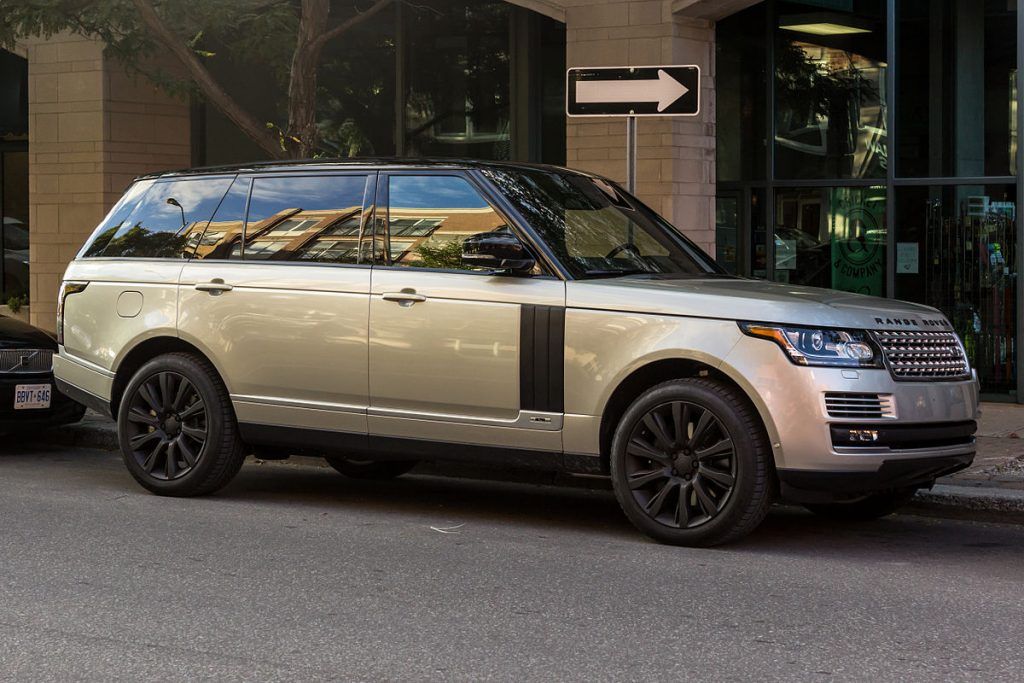
13. **Range Rover**: The Range Rover brand embodies luxury, prestige, and formidable off-roading capabilities, cultivating a dedicated following over decades for its distinctive blend of performance and opulent comfort. These vehicles are designed to exude sophistication while being equally at home traversing challenging terrains, offering a unique proposition in the SUV market. However, this blend of high-end features and rugged intent often comes with a notable trade-off in terms of long-term reliability and ownership costs.
While Range Rovers are undeniably attractive, they have not typically been known as the most consistently reliable vehicles, a reputation that certain model years further solidify. Specifically, Range Rovers from the 2012 to 2021 model years have been identified as having persistent problems related to the engine, the diesel particulate filter, and, notably, the complex air suspension system. These components are integral to the vehicle’s operation and comfort, and their failure can lead to complex and incredibly expensive repairs.
The sophisticated air suspension, while contributing significantly to the Range Rover’s luxurious ride and impressive off-road adaptability, is a frequent source of issues that demand specialized knowledge, diagnostic tools, and costly parts to rectify. Similarly, engine problems and issues with the diesel particulate filter can lead to significant downtime, environmental compliance concerns, and substantial financial outlays, often rendering the vehicle inoperable until addressed.
The general consensus suggests that the odds of a Range Rover exceeding 100,000 miles without encountering major and expensive issues are not favorable, making them a significant financial risk as they age. The initial luxury inherent in these vehicles unfortunately translates directly into luxury-level repair bills, which can quickly accumulate and surpass the vehicle’s depreciated market value.
For those drawn to the undeniable appeal of a Range Rover, it is therefore essential to approach high-mileage models with a clear understanding of the potential for escalating maintenance and repair costs. Thorough pre-purchase inspections by specialists familiar with the brand and a detailed review of comprehensive service records are absolutely vital to mitigate the risk of acquiring a vehicle that quickly becomes a demanding and costly money pit.
Car Model Information: 2018 Honda Civic EX
Name: Range Rover (L460)
Manufacturer: Jaguar Land Rover
ModelCode: L460
Designer: Gerry McGovern
Production: 2022–present
Assembly: Solihull
Class: Full-size SUV
BodyStyle: Sport utility vehicle
Layout: Front-engine, four-wheel-drive layout
Platform: Jaguar Land Rover car platforms#MLA-Flex
Related: Range Rover Sport#L461
Engine: Petrol engine,Straight-six engine,twin-turbo,Diesel engine,3.0 L twin-turbo I6,3.0 L twin-turbo I6 MHEV,Petrol engine,3.0 L turbo I6 PHEV
Motor: ubl
Abbr: on
Drivetrain: class=nowrap,Mild hybrid,Plug-in hybrid,P510e/P550e)
Transmission: ZF 8HP transmission
Battery: Kilowatt-hour,Lithium-ion battery
Wheelbase: class=nowrap,{{convert,2997,mm,in,1,abbr=on
Length: class=nowrap,{{convert,5052,mm,in,1,abbr=on
Width: class=nowrap,{{convert,2047,mm,in,1,abbr=on
Height: 1870 mm
Weight: [object Object]
Sp: uk
Predecessor: ubl
Categories: All-wheel-drive vehicles, All articles containing potentially dated statements, All articles with unsourced statements, Articles containing potentially dated statements from 2023, Articles with short description
Summary: The Land Rover Range Rover (L460), generally shortened to Range Rover, is the fifth generation of the Range Rover, a range of mid- and full-size luxury crossovers produced by Land Rover. It was revealed in London on 26 October 2021. The car is available in two different wheelbases, and the vehicle is available in guises consisting of petrol, petrol mild hybrid, petrol plug-in hybrid, and diesel mild hybrid. A seven-seater option was available slightly after launch.
Get more information about: Range Rover (L460)
Buying a high-performing used car >>>
Brand: Range Rover Model: Range Rover
Price: $19,974 Mileage: 64,299 mi.
Read more about: Unpacking the Generational Divide: 14 Classic Boomer Cars Millennials Just Aren’t Craving – And Why
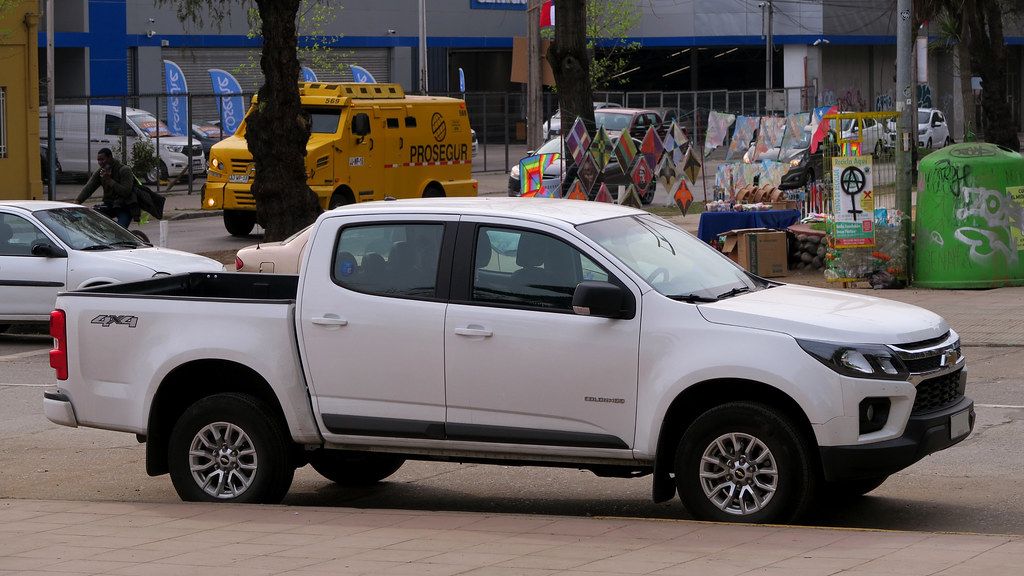
14. **Chevrolet Colorado**: The Chevrolet Colorado presents itself as a capable midsize pickup truck, offering a combination of good performance, various powertrain options, and impressive towing and payload capacities, augmented by appealing off-road trims. It’s a versatile vehicle designed to cater to both work-related demands and recreational adventures, making it a popular choice for many truck enthusiasts seeking utility. However, for those considering a used Colorado with substantial mileage, specific model years are noted for developing costly and frequent issues that undermine its long-term reliability.
According to CoPilot for Car Shopping, consumers are strongly advised to bypass Chevrolet Colorados from the 2004-2006 and 2005-2018 model years. These particular iterations of the truck have a documented history of encountering significant problems, primarily centered around their transmissions and interior accessory systems. Transmission issues in a pickup truck, which is often subjected to heavier loads and more strenuous use, can be particularly debilitating, complex, and expensive to resolve, significantly impacting the vehicle’s core function.
The frequency and high cost of fixing these reported transmission problems, alongside recurring interior accessory issues, significantly detract from the Colorado’s utility and long-term value. What might initially appear as a capable and robust vehicle can quickly transform into a consistent source of frustrating and expensive repair bills, undermining its appeal as a reliable workhorse or adventure companion. These issues become increasingly pronounced and costly as the trucks surpass the 100,000-mile mark, demanding consistent attention.
Therefore, potential buyers seeking a dependable and economical midsize truck for the long term should exercise extreme caution with the specified Chevrolet Colorado model years. While the truck offers commendable capabilities, the known propensity for severe and expensive transmission and electrical accessory problems after significant mileage makes them a high-risk investment. A rigorous pre-purchase inspection focusing on these critical areas, coupled with a thorough review of past maintenance, is indispensable for making an informed and financially sound decision.
Car Model Information: 2023 Chevrolet Colorado Trail Boss
Name: Chevrolet Colorado
Caption: 2024 Chevrolet Colorado Z71
Manufacturer: General Motors
Production: 2003–2012, 2014–present (US),2004–2020
(Thailand),2011–present (Brazil)
Class: Pickup truck,Pickup truck
Layout: Front-engine, rear-wheel-drive layout
Predecessor: Chevrolet S-10,Chevrolet D-Max,Holden Rodeo,Holden Ute
Aka: GMC Canyon,Holden Colorado
Categories: 2010s cars, 2020s cars, All-wheel-drive vehicles, All articles with dead external links, Articles with dead external links from November 2016
Summary: The Chevrolet Colorado (sharing mechanical commonality with the GMC Canyon) is a series of compact pickup trucks (mid-size since second generation) marketed by American automaker General Motors. They were introduced in 2004 to replace the Chevrolet S-10 and GMC S-15/Sonoma compact pickups. The Colorado is named after the U.S. state of Colorado, while the Canyon took its name from the deep chasm between cliffs.
Get more information about: Chevrolet Colorado
Buying a high-performing used car >>>
Brand: Chevrolet Model: Colorado
Price: $36,659 Mileage: 22,179 mi.
Read more about: 15 Cars That Become Costly Money Pits After 100,000 Miles: Essential Insights for Savvy Buyers
The journey through the lifespan of a vehicle often brings unexpected turns, particularly as the odometer clicks past the 100,000-mile benchmark. While some cars continue to faithfully serve their owners with minimal fuss, a distinct category unfortunately transitions into demanding money pits, consistently requiring significant financial outlays for critical repairs. The insights gathered from industry experts like Jacob Carter and detailed analyses across various sources underscore a crucial truth: an informed decision at the point of purchase is your best defense against future financial headaches. Investing time in thorough research and diligent pre-purchase inspections can illuminate potential pitfalls, ensuring that your vehicle remains a reliable companion on the road of life, rather than a constant drain on your wallet. May your next set of wheels be a testament to longevity and value, enduring the miles without emptying your pockets.



